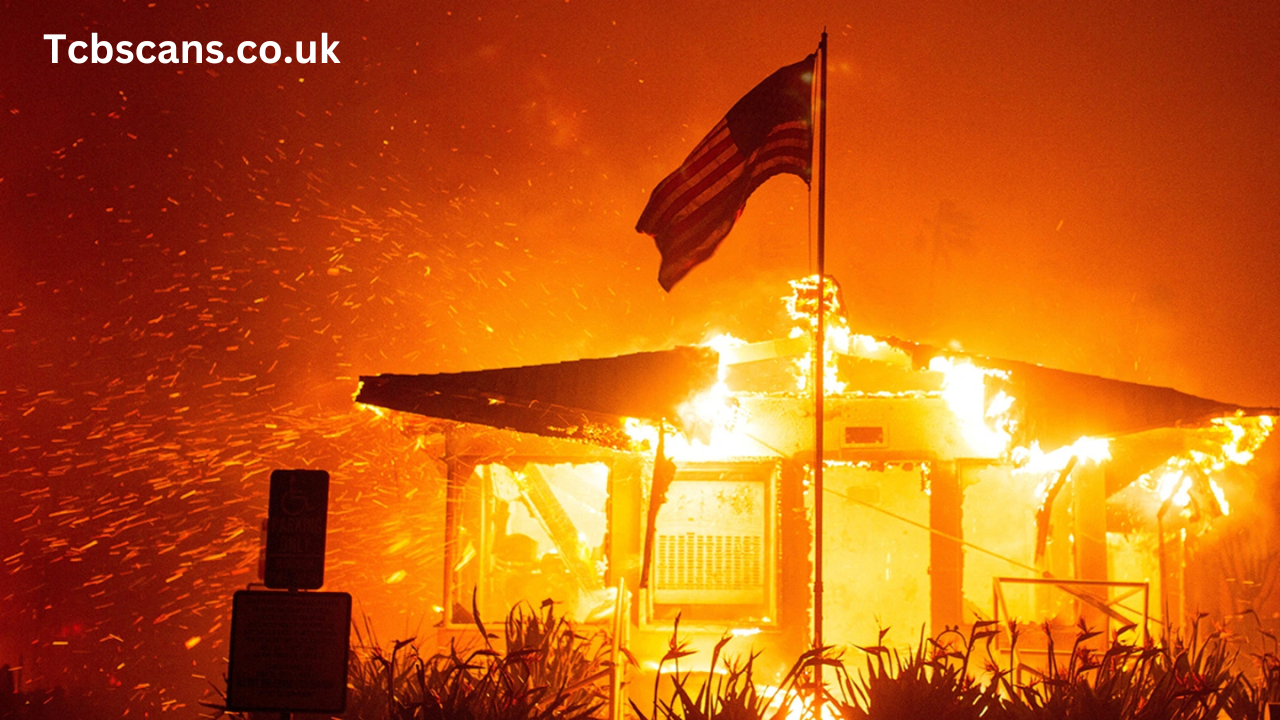As 2025 unfolds, Los Angeles grapples with the recurring threat of fires. Fueled by a combination of natural and human-induced factors, these incidents pose significant challenges to residents and authorities alike. Fires in 2025 have already caused substantial damage, underscoring the need for vigilance and preparedness. With fire seasons growing longer and more intense, understanding their causes and impacts is more critical than ever.
Key Causes of L.A Fire 2025
- Natural Factors:
- Drought and High Temperatures: Prolonged dry spells and record-breaking heat in 2025 have created the perfect wildfire conditions.
- Santa Ana Winds: These strong, dry winds act as accelerants, spreading fires quickly across vast areas.
- Human Activities:
- Construction and Urban Expansion: Development near wildland areas increases the risk of accidental fires.
- Negligence: Discarded cigarettes, unattended campfires, and other careless actions often ignite flames.
- Arson: Intentional fire-setting remains a persistent problem.
- Climate Change:
- Rising global temperatures and unpredictable weather patterns intensify fire risks, making 2025 one of the most challenging years yet.
Major L.A Fire Incident in 2025
Several fires have already marked 2025 as a critical year for fire management in Los Angeles:
- Sun Valley Blaze: This fire scorched over 50,000 acres, leading to widespread evacuations.
- Malibu Canyon Fire: A fast-moving fire destroyed dozens of homes and threatened iconic landmarks.
- Silver Lake Incident: Though smaller in size, this fire caused significant property damage due to its proximity to urban centers.
These incidents highlight the growing need for advanced firefighting methods and community awareness.
Advancements in Firefighting Technology in 2025
In response to the increasing severity of wildfires, Los Angeles has adopted cutting-edge technologies:
- AI-Powered Systems: Artificial intelligence now predicts fire-prone areas by analyzing weather patterns and vegetation conditions.
- Drones and Satellite Monitoring: These tools provide real-time updates on fire behavior and help coordinate firefighting efforts.
- Advanced Equipment: Firefighting helicopters with water-dropping capabilities and portable thermal imaging cameras will become standard tools in 2025.
Collaboration between government agencies and private organizations has further strengthened firefighting capabilities.
Impact of L.A Fire 2025 on Environment and Communities
- Environmental Impact:
- Air Quality: Smoke and ash from fires have significantly worsened air pollution, leading to increased cases of respiratory issues.
- Wildlife: Fires have destroyed critical habitats, displacing countless animals and endangering species.
- Landscapes: Repeated fires deplete soil nutrients, making regrowth difficult and altering ecosystems permanently.
- Community Impact:
- Displacement: Thousands of residents have been forced to evacuate, with some losing their homes entirely.
- Economic Losses: Damage to properties, infrastructure, and businesses has cost billions in 2025.
- Mental Health: The stress and trauma of living in fire-prone areas take a toll on residents’ well-being.
Emergency Preparedness and Community Role in 2025
Preparation is key to minimizing the impact of fires. Los Angeles has made significant strides in emergency management this year:
- Improved Evacuation Protocols: Authorities have streamlined evacuation routes and increased public awareness through regular drills.
- Community Education: Programs teach residents how to create defensible spaces, prepare emergency kits, and respond during fires.
- Resources for Residents: The city has set up more shelters and hotlines to assist those affected by fires.
Preventive Measures for Reducing Fire Risks in 2025
Preventing fires requires a combination of individual effort and systemic action:
- Sustainable Landscaping:
- Planting fire-resistant vegetation and maintaining clear zones around properties.
- Fire-Resistant Construction:
- Using materials like concrete and metal for homes near wildland areas.
- Legislation:
- Policies introduced in 2025 focus on reducing greenhouse gas emissions and promoting responsible land use.
Addressing climate change remains a cornerstone of long-term fire prevention strategies.
Looking Forward: Reducing Fire Risks Beyond 2025
As Los Angeles adapts to the realities of more intense fire seasons, the focus is on building a resilient future:
- Innovative Technologies: Continued investment in AI, drones, and advanced firefighting tools.
- Community Engagement: Strengthening public participation in fire safety initiatives.
- Sustainable Practices: Encouraging eco-friendly urban development to reduce fire risks.
A collective effort is needed to ensure that future fire seasons are less destructive.
FAQs About L.A Fire 2025
- Why are fires so common in Los Angeles? Natural factors like dry conditions and winds, combined with human activities and climate change, make fires frequent.
- How can I protect my home from fires? Create defensible spaces, use fire-resistant materials, and stay informed about local fire safety guidelines.
- What should I include in an emergency kit? Water, non-perishable food, first-aid supplies, medications, important documents, and a flashlight.
- Where can I find resources during a fire? Visit local government websites, tune into LAFD updates, and connect with community organizations for support.
By staying informed and prepared, residents can reduce the impact of fires and contribute to a safer Los Angeles in 2025 and beyond.
